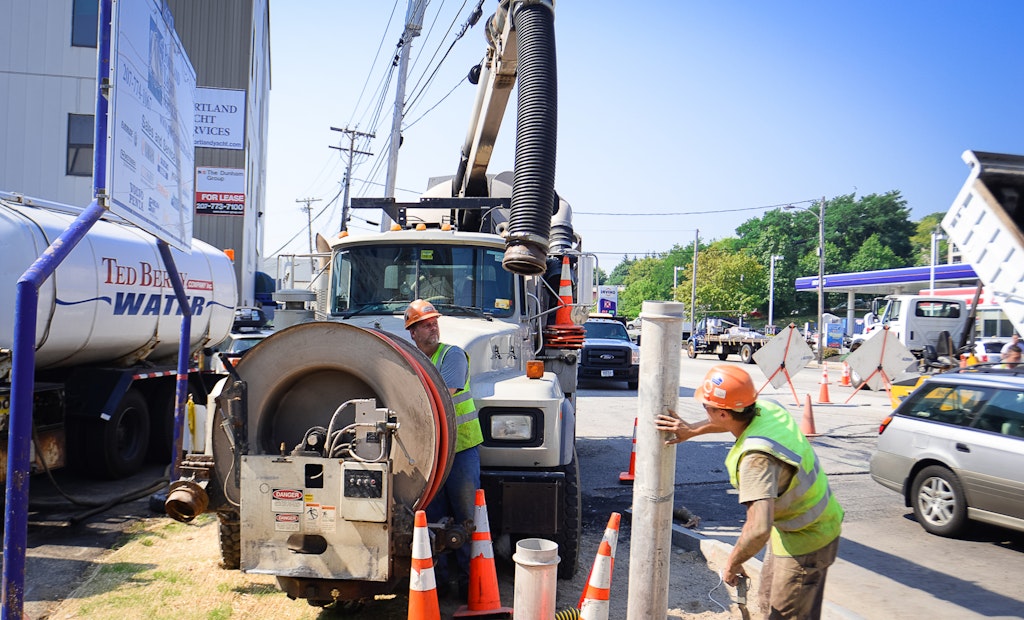Interested in Safety?
Get Safety articles, news and videos right in your inbox! Sign up now.
Safety + Get AlertsMore than 279 times each day, or 102,000 times in 2021, a crash occurred in a work zone. Of the 156 pedestrian fatalities occurring in work zones, 32% were workers.
We asked two utility companies recognized for outstanding safety how they manage this risk.
1. Plan for safety
South Carolina-based Santee Cooper likes to do as much advance planning as possible. A version of the federal Manual on Uniform Traffic Control Devices (MUTCD) guides the setup of safe work zone layouts. It includes detailed schematics and examples of recommended advance traffic control warning signs, tapers for lane transitions, buffer spaces, temporary channelizing devices (such as cones, drums, traffic barriers), and pavement markings.
“We try to do as much planning as possible to mitigate issues,” says Rose Foster, safety specialist for Santee Cooper, who is responsible for the safety of 14 crews working in Myrtle Beach, South Carolina. When emergency repairs are needed, the utility company will often work with law enforcement agencies to divert traffic.
Risks increase with higher speeds and more traffic.
“If we can, we like to close the lane,” Foster says.
Vehicles are parked on the road, where they can serve as an obstacle to prevent oncoming traffic from hitting workers in the work zone.
“The number of controls put in place will vary depending on the situation, whether it’s a rural road with little traffic or an urban area with a lot of traffic,” says Tony Long, director of safety and health services at JEA, a community-owned electric, water and sewer utility based in Jacksonville, Florida. “Both are equally important. It only takes one vehicle to create a devastating, life-altering event.
“We have planners and project managers, foremen, and crew leaders who will plan out what needs to happen.”
2. Get visible
High-visibility clothing and equipment mitigates risk in the work zone. Santee Cooper utilizes Class 3 safety gear along with yellow flashing signs behind the vehicle and overhead lights on trailers when working at night.
“We use strobes in our headlights and taillights and rotating strobes on the roof of the vehicles,” says Jason Fugate, senior manager of occupational safety and health at Santee Cooper.
White vehicles with reflective tape improve visibility. JEA also utilizes highly reflective PPE and portable lighting when working at night.
3. Improve awareness and keep an eye on the traffic
JEA relies on classroom and on-the-job training to teach workers the hazards of working near or on a roadway.
“We discuss what we need to keep each other safe,” says Long. “We teach workers to be aware of their surroundings, to pay attention to signs and alarms, and to stay focused.”
JEA gives special emphasis to new-hire training and pairs new workers with a more experienced co-worker to mitigate the risk that comes with inexperience.
“When working near a roadway, awareness needs to be heightened,” says Foster.
At Santee Cooper, the crew supervisor watches the workers and the traffic. The flagger always has his eyes on the oncoming traffic.
“As a worker, your head needs to be on a swivel,” Foster says.
4. Engage workers in safety
Fugate believes keeping workers safe in any situation requires ongoing engagement. Over the past four years, Santee Cooper has focused on continuous improvement.
“We’re always looking for what’s next,” says Fugate. “We’re doing more risk assessments, more training, we’re updating our people on where we are with safety.”
The end result is a low safety incident rate that has earned Santee Cooper recognition by the American Public Power Association for several consecutive years.
JEA is proactive in observing workers and coaching to avoid at-risk behaviors. When things are done right, those behaviors are reinforced. Long believes consistency in messaging contributes to success.
“We have a standing call with our directors every Monday morning where we discuss near misses and/or incidents as well as corrective action,” says Long. “We share information about what works and what doesn’t.”
In 2021 JEA was honored with a first-place safety award from the American Public Power Association.
About the Author
AEM is the North American-based international trade group representing off-road equipment manufacturers and suppliers, with more than 1,000 companies and 200-plus product lines in the agriculture and construction-related sectors worldwide. AEM has an ownership stake in and manages several world-class exhibitions, including CONEXPO-CON/AGG.






